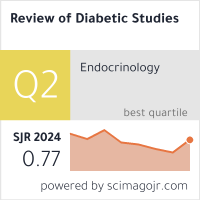Atypical Microbial Isolates from Infected Diabetic Foot Ulcers: A Case Series from Greece
Keywords:
Diabetic foot, isolated, chronic infections, Staphylococcus aureusAbstract
Diabetic foot infections are a growing health problem worldwide, increasing morbidity and causing a large number of nontraumatic lower-extremity amputations [1-3]. Cultures (ideally tissue, but more frequently swab or aspiration) are a useful guide to antibiotic treatment [1, 2]. The commonest Gram-positive pathogen is Staphylococcus aureus, while Escherichia coli and Pseudomonas aeruginosa are the commonest Gram-negative ones [2]. Of note, chronic infections are usually polymicrobial, but less common; atypical microorganisms may be isolated from them [2]. Therefore, the aim of this study was to record atypical microbial isolates from infected diabetic foot ulcers (DFUs).


